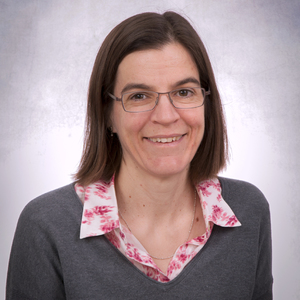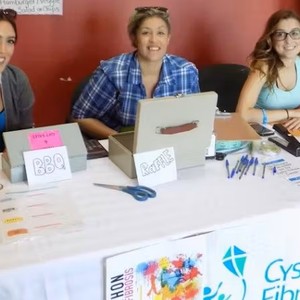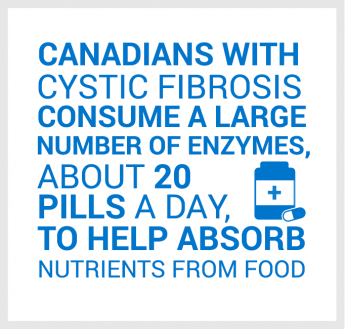Dr. Valerie Waters is a professor of pediatrics at the University of Toronto and a physician in the Department of Infectious Disease at SickKids. Dr. Waters was recently funded by Cystic Fibrosis Canada for her study; Pseudomonas aeruginosa and staphylococcus aureus interactions and antimicrobial tolerance in patients with cystic fibrosis. Her work will focus on the co-infections of these bacteria, driving the path for more effective treatments. Read below to learn more about Dr. Waters’ contribution to CF research.
Can you explain what PA and SA infections are and talk about their antibiotic resistant properties?
Pseudomonas aeruginosa, PA, and Staphylococcus aureus, SA, are two of the most common bacterial pathogens that we see in cystic fibrosis patients. SA infections typically occur in younger children while PA infections become more prevalent as they age. However, there is a period where these two infections overlap, causing about 30% of CF patients to be co-infected with both bacteria.
In terms of antimicrobial resistance, the two infections have resistance to different antibiotics. Our research focuses on how the interactions between those two bacteria can make them more resistant to antibiotics than if they were alone.
Can you provide a brief overview of your research project?
This is an observational study of children with CF, using sputum samples from St. Michaels Hospital and SickKids to visualize both PA and SA infections and their interactions with each other. We are going to look at the geographical space between these bacteria and determine whether co-infections are associated with different outcomes compared to infection by one bacterium alone.
Our research associate, Amanda Morris (recipient last year of a postdoctoral fellowship award from Cystic Fibrosis Canada), has developed a way of looking at the bacteria directly within the sputum of CF patients. Overall, we are trying to understand how these bacteria interact and how that may affect treatments. We want to know how to better treat patients with chronic PA infections, since currently we do not have a clear picture of how their interactions affects antimicrobial treatment.
What inspired you to pursue research in CF and more specifically, what inspired you to pursue this specific project?
I’ve been researching infections in cystic fibrosis for the last 25 years. I started as a fellow in Infectious Diseases in New York City and worked in the cystic fibrosis lab of Dr. Alice Prince and Dr. Lisa Saiman, two well-established CF researchers. When I returned to Toronto, there was an interest to collaborate with CF clinics here at SickKids and St. Michael’s Hospital to implement more effective methods to treat CF patients who have drug-resistant infections. So, our research is based on the clinical problems that we see in CF patients, and we are actively trying to develop better ways of approaching pulmonary infections to allow CF patients to live longer, healthier lives.
Specifically related to this question, we have been studying PA and biofilm infections for a long time now and it’s become more evident in the last several years that organisms don’t exist on their own within the airways, but rather there's a complex microbial system in CF patients. We have discovered that the bacteria may actually be interacting with each other within the airways, which can affect their behaviours and susceptibility to antibiotics.
Can you talk about the significance that you think this project will have to both the research community and those living with CF?
The approaches that we are using in this research are relatively new, which holds a lot of promise. The idea of taking sputum samples and directly visualizing the biogeography and geospatial interactions, is not often applied in CF patients, and has yet to be used to look at two organisms at the same time. So, in terms of the research community, it will be interesting to see whether there is potential in this method and feasibility for future use.
We are hoping this method will help us understand how to better treat co-infections in CF patients. Right now, there is no clear consensus on the treatment regimen when there are two bacteria interacting with each other, and I think that our research is a hopeful start to addressing this.
Have you reached any notable milestones so far in your research?
So far, we have enrolled about 15 patients with the help from SickKids, St. Michael’s Hospital, and McGill. One milestone that Amanda has reached so far is validating this new method and finding both positive and negative controls to prove that what we are identifying is Pseudomonas. I think it’s a great milestone that a lot of the techniques and methods that we have used so far are successful.
CF Canada has a number of research priorities that were determined by the CF community. You have proposed that your research will eradicate chronic PA infections and improve airway infection and detection. Can you explain how you plan on doing this?
I think it is important to remember that Pseudomonas infections are still prominent in the CF community. Although a lot of our patients are starting on modulators, there is still a percentage that are not, and Pseudomonas still occurs in both populations.
Unfortunately, I don’t believe that Pseudomonas will be gone from our community in the near future, so it's important that we know how to treat it and reduce the number of CF patients that are being affected by it. As much as I wish Pseudomonas could be fully eradicated, right now it is important that we focus our efforts on finding effective treatments.
What do you see changing over the next five to 10 years for those living with CF?
I am hopeful that with increased access to modulators as well as use at a younger age, there will come a day when we don’t have to deal with these infections. If you can correct the underlying channel function and not have Pseudomonas colonization to begin with, then we can prevent these infections altogether. I am hopeful that in five to 10 years, patients will not develop infections and lung damage, and that those who currently do not have access to modulators will one day have access to compounds that can correct these underlying defects.




.jpg)
